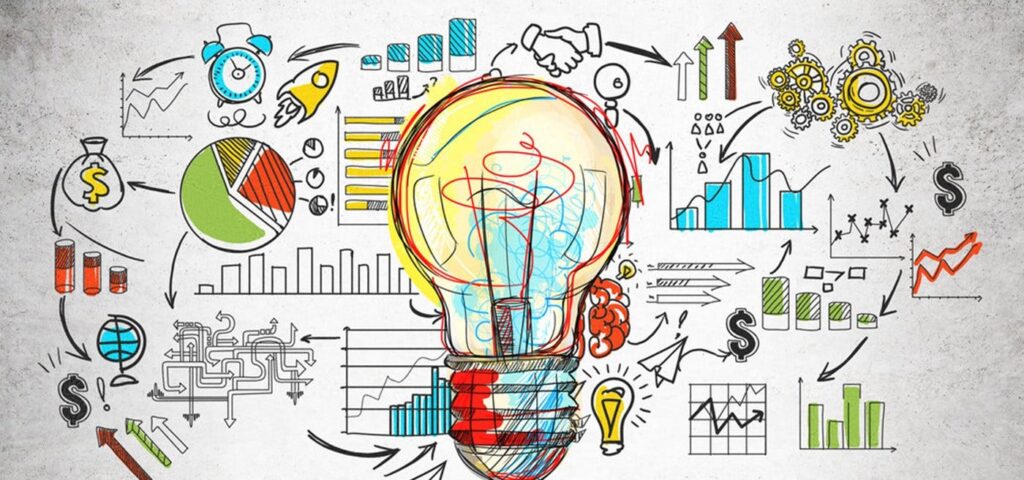Computer science deals with the study of algorithms, data structures, programming languages, and the design and analysis of computer systems. It encompasses a wide range of topics, including artificial intelligence, machine learning, cybersecurity, software engineering, and computer networking. Computer scientists develop technologies and solutions that power our digital world, from software applications to complex systems.
On the other hand, economics is the study of how societies allocate resources to satisfy their needs and wants. It explores topics such as production, distribution, and consumption of goods and services, as well as how individuals, businesses, and governments make decisions in various economic contexts. Economics encompasses microeconomics, which focuses on individual markets and decision-making units, and macroeconomics, which studies the economy as a whole.
How does computer science influence modern technology?

Computer science influences modern technology in numerous ways, shaping the development, design, and functionality of various devices and systems. Here are some key ways in which computer science impacts modern technology:
Software Engineering Methodologies
Agile methodologies, such as Scrum and Kanban, emphasize iterative development, collaboration, and flexibility in responding to changing requirements.
Teams work in short iterations (sprints) to deliver working software incrementally, gathering feedback from stakeholders and continuously improving the product.
The waterfall model follows a sequential approach to software development, with distinct phases (requirements, design, implementation, testing, deployment) executed in a linear fashion. Each phase must be completed before moving on to the next, making it suitable for projects with well-defined requirements and stable designs.
DevOps
DevOps combines development (Dev) and operations (Ops) practices to streamline software delivery and improve collaboration between development and IT operations teams.
Automation, continuous integration/continuous delivery (CI/CD), and infrastructure as code (IaC) are key principles of DevOps, enabling rapid and reliable deployment of software changes.
Data Structures and Algorithms
Data structures are fundamental components for organizing and storing data in memory or on disk. Examples include arrays, linked lists, stacks, queues, trees, graphs, and hash tables.
Each data structure has its advantages and trade-offs in terms of memory usage, access time, and operations supported, influencing the efficiency of algorithms that operate on them.
Algorithms are step-by-step procedures for solving computational problems or performing specific tasks. They can range from simple algorithms like sorting and searching to complex algorithms like dynamic programming and graph traversal. Analyzing the time and space complexity of algorithms helps evaluate their efficiency and scalability.
Cybersecurity and Cryptography
Cryptographic techniques are used to secure communication, data storage, and authentication mechanisms. Symmetric encryption algorithms (e.g., AES) use the same key for encryption and decryption, while asymmetric encryption algorithms (e.g., RSA) use public and private key pairs.
Cryptographic hash functions (e.g., SHA-256) generate fixed-size hash values from input data, used for data integrity verification and password hashing.
Cybersecurity encompasses practices, technologies, and policies designed to protect computer systems, networks, and data from unauthorized access, data breaches, and cyber attacks.
Security measures include access control mechanisms, intrusion detection systems (IDS), firewalls, antivirus software, and security protocols like SSL/TLS for secure communication over the internet.
Human-Computer Interaction (HCI)
HCI principles guide the design of user interfaces (UI) for software applications and digital devices, focusing on usability, accessibility, and user experience (UX). Design considerations include layout, navigation, visual aesthetics, feedback mechanisms, and error handling to create intuitive and engaging interfaces.
Usability testing involves evaluating how users interact with a system to identify usability issues and gather feedback for iterative improvements. Techniques such as user interviews, surveys, task analysis, and usability metrics help assess user satisfaction, efficiency, and effectiveness in accomplishing tasks.
Databases and Information Retrieval
DBMS software provides features for creating, querying, updating, and managing databases, ensuring data consistency, concurrency control, and data integrity.
Relational database management systems (RDBMS) like MySQL, PostgreSQL, and Oracle support SQL-based querying, while NoSQL databases like MongoDB and Cassandra offer flexibility for handling unstructured data and scalability for distributed environments.
Information Retrieval
Information retrieval systems enable users to search and retrieve relevant information from large collections of documents or datasets. Search engines use indexing techniques to create searchable catalogs of content, ranking algorithms to prioritize search results based on relevance, and query processing methods to efficiently retrieve matching documents.
Parallel and Distributed Computing
Parallel Computing: Parallel computing techniques involve executing multiple tasks concurrently to improve performance and efficiency. Parallel architectures like multi-core processors, GPUs, and distributed computing frameworks like MPI (Message Passing Interface) and OpenMP enable parallel execution of tasks across multiple processing units, dividing workloads into smaller tasks that can be processed simultaneously.
Distributed Computing
Distributed computing systems distribute computational tasks across multiple interconnected nodes (computers or servers) in a network, enabling scalability, fault tolerance, and resource sharing.
Technologies like Apache Hadoop, Apache Spark, and Kubernetes provide frameworks for managing distributed data processing, storage, and container orchestration in cloud computing environments.
What are the fundamental principles of economics?

The fundamental principles of economics provide a framework for understanding how individuals, businesses, and governments make decisions about the allocation of resources. Some of the key principles include:
- Scarcity: There’s not enough stuff for everyone to have everything they want.
- Opportunity Cost: When you choose something, you miss out on something else.
- Supply and Demand: People decide how much stuff to make and buy, which affects prices.
- Marginal Analysis: Think about whether it’s worth getting one more thing.
- Incentives: What makes people want to do things, like rewards or punishments.
- Comparative Advantage: Some people are better at making certain things, so they trade to get what they need.
- Market Efficiency: Making sure things are shared and used in the best way.
- Role of Government: Sometimes, the government helps fix problems when things don’t work out well on their own.
How do computational economics and algorithmic game theory intersect?

Computational economics and algorithmic game theory intersect in several ways. Both fields leverage computational methods to model complex economic systems and analyze strategic interactions among agents. Algorithmic game theory provides formal solution concepts like Nash equilibria, which computational economics applies to study economic scenarios and analyze outcomes of strategic interactions.
Additionally, algorithmic game theory designs efficient algorithms for solving game-theoretic problems, which computational economics uses for optimization, mechanism design, and auction design. Both contribute to market design, with algorithmic game theory providing theoretical foundations and computational economics testing and implementing practical designs.
Furthermore, computational economics employs agent-based modeling techniques, with algorithmic game theory informing the strategic interactions among agents. Finally, computational methods are used in experimental economics, with algorithmic game theory guiding experiment design for robust insights into economic behavior. This interdisciplinary intersection enriches research in economics, computer science, and related domains, fostering practical applications and theoretical advancements.
Final Words
We’ve learned about computer science and economics. Computer science helps create technology we use, like apps and the internet. Economics teaches us about money and how we make choices.
Sometimes, these two fields work together to solve big problems, like using computers to understand how economies work. By learning about both, we can find new ways to solve problems and make the world better.
